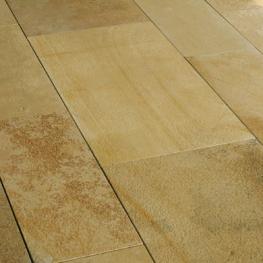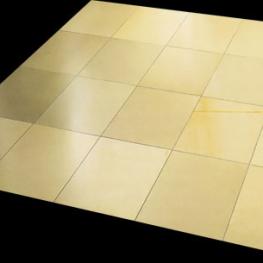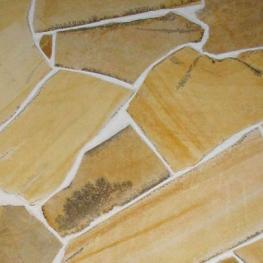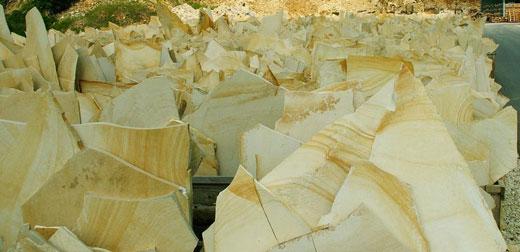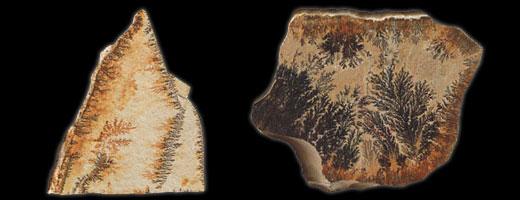Fossilstone
The Solnhofen limestone is mainly used with natural cleft. It's natural surface is extraordinarly smooth homogeneous. We also offer this stone with slightly honed or matte honed surface. When processed with stone protection products it is easy to clean it with using just water or a little bit of soft green soap.
We offer the following products from Solnhofen limestone:
- crazy paving tiles with natural cleft, thickness can be chosen from 6-6,5mm, ca. 8-12mm, ca. 13-19mm, ca. 20-30mm (so-called Fossilstone),
- tiles with natural cleft cut to different sizes (advisably free length),
- tiles with honed surface cut to size
- hexagonal tiles with natural cleft or honed surface,
- "Rosenspitz" tiles with natural cleft or honed surface,
- slightly honed surface tiles.
Solnhofen limestone is mainly suitable for interior use, but thicker crazy paving tiles have been used for garden roads and terrace coverings, but only when the tiles are installed without mortar on sand base and when joints are filled with fine flintstone or gravel.
The physycal-mechanical properties of Solnhofen limestone are following:
| Weight by volume | 2,55 kg/dm3 |
|
Water absorbency by weight |
1,4% |
|
Wear-resistance (cm3/50cm2) |
14,8 |
| Pressure strength | 215 N/mm2 |
| Flexile strength | 28,6 N/mm2 |
Fossilstone aka Solnhofener is a thick tile-like limestone quarried in Baier, which lies in extraordinarily thin homogeneous layers. During the Jurassic era fine-grained lime settiments silted in that area, in which many organisms had fossilized. Nowadays the fossiles or fishes, lobsters, dragonflies and other fossiles of different organisms can be found between the layers of Solnhofen limestone. The limestone of Solnhofen is famous for a fossile of a primeval bird, the Archaeopteryx, found between the layers of Solnhofen.
On the surface of Solnhofen limestone you will notice beautiful moss-like dendrites, which have formed anorganicly - they are iron or manganese compounds, which have infiltrated between the layers and have created such beautiful patterns.
The superb properties of the limestone of Solnhofen made it possible for Senefelder to invent the lithography printing. Lithography requires certain layers of stone with suitable thickness, density and strength, which has been found only near Solnhofen. Famous names the likes of Chagall, Toulouse Lautrec, Miro and Picasso have been involved with lithography. Their lithographs are invaluable today.
The limestone of Solnhofen has been used over centuries for the building of prestigious buildings, where it's superb properties have been used - it's durability, hardness and natural colors. The first known quarries of Solnhofen were already working during the 14. century. What is interesting, is the fact that this stone is quarried by hand even today, by using crowbars and wedges.

